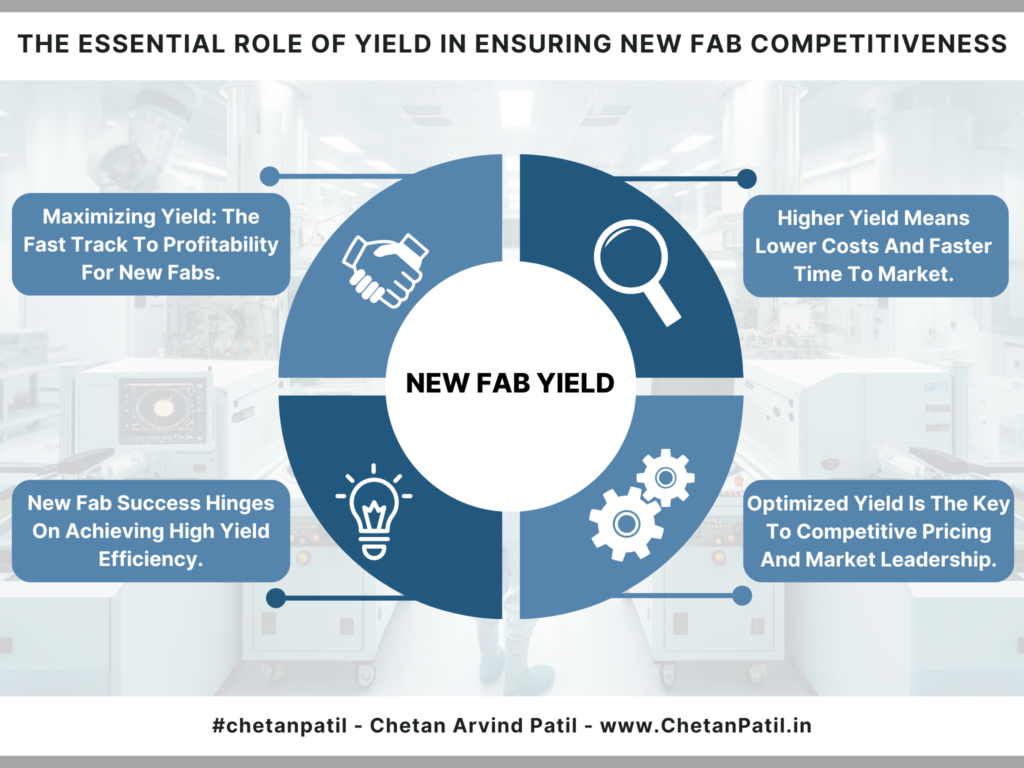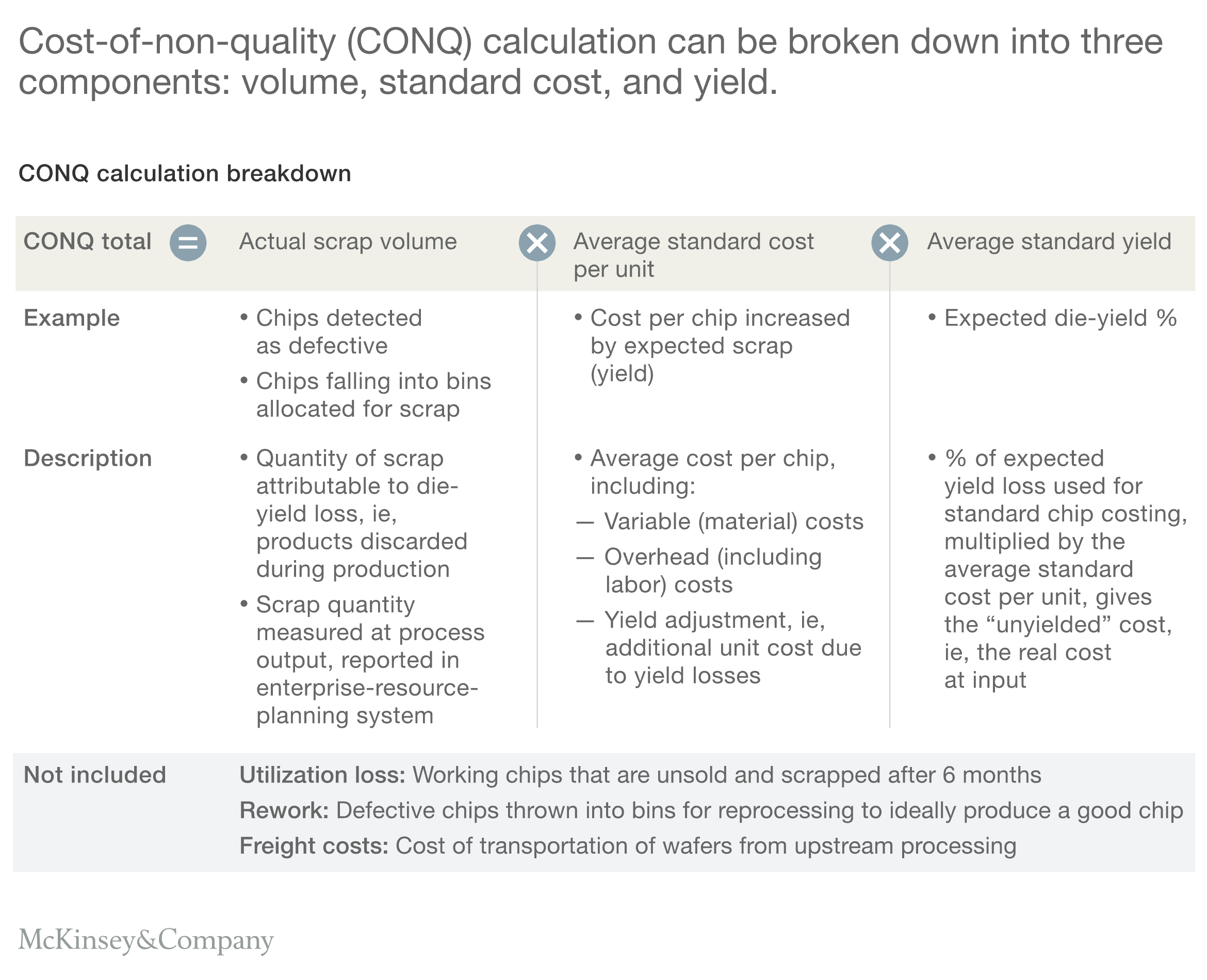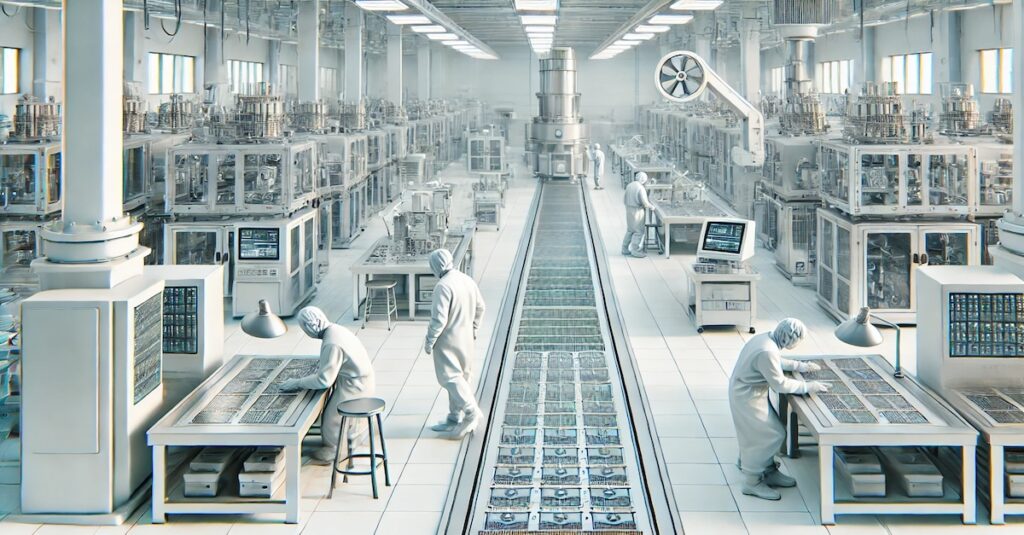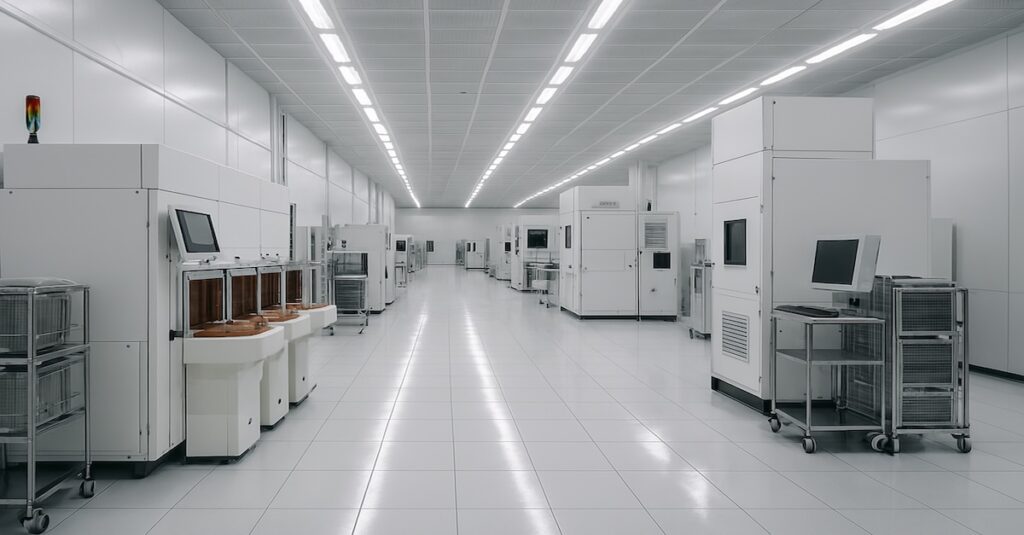Image Generated Using DALL-E
FAB And Yield
Yield in semiconductor manufacturing is a complex concept that measures the efficiency and effectiveness of the production process. It is usually expressed as the ratio of the number of good dies (functional chips) to the total number of dies made on a wafer.
As the industry moves towards smaller nodes and more complex architectures, yield becomes increasingly essential. It affects the economic viability of a fabrication facility and plays a pivotal role in determining its competitive advantage in a market that values efficiency and innovation.
Let us explore the technical aspects of yield in semiconductor manufacturing and its crucial role in ensuring the competitiveness of new fabrication facilities.
Why Yield Is Vital For New FABs
Yield is vital for new semiconductor fabrication plants (FABs) because it fundamentally determines their economic success and competitive position in the market. High yield – the proportion of functional devices produced from the total manufactured – directly reduces the cost per functional die, enabling new FABs to offer competitive pricing while maintaining profitability.
This cost efficiency is crucial given the substantial capital investment required to establish a new FAB. Moreover, achieving high yield early in operations accelerates capital recovery and signals process maturity and reliability to potential customers and partners. It also enhances time-to-market for new technologies, providing a competitive edge in an industry where rapid innovation is critical. High yield also ensures product quality and reliability, strengthening the FAB’s reputation and fostering customer trust.
In essence, yield impacts every aspect of a new FAB’s success, from financial viability and market competitiveness to technological leadership and brand reputation. Further, below is a table summarizing why yield is vital for new FABs:
| Aspect | Importance | Explanation |
|---|---|---|
| Economic Viability | Cost Efficiency | High yield reduces the cost per functional die, which is crucial for profitability in an industry with tight margins. Lower costs per die improve the overall economic efficiency of the FAB. |
| Capital Recovery | Maximizing yield accelerates the return on the substantial capital investments required for new FABs by increasing the output of sellable products, thus improving cash flow and financial health. | |
| Competitive Advantage | Time-to-Market | High initial yields enable new FABs to bring products to market faster, providing a competitive edge in rapidly evolving technology sectors where delays can result in lost market opportunities. |
| Customer Acquisition | Demonstrating high yield reflects process maturity and reliability, making the FAB more attractive to potential customers and partners who are seeking dependable manufacturing services. | |
| Market Positioning | Superior yield can differentiate a FAB in competitive bids, as clients prefer manufacturers capable of delivering high-quality products consistently, enhancing the FAB’s position in the market. | |
| Technological Leadership | Process Innovation | Achieving high yield signifies successful implementation of advanced manufacturing techniques and technologies, establishing the FAB as a leader in process innovation and capability. |
| Scaling Advanced Nodes | Maintaining high yield at smaller process nodes (e.g., 7nm, 5nm) is challenging; success in this area demonstrates technical prowess and leadership in cutting-edge semiconductor fabrication. | |
| Quality Assurance | Product Reliability | High yields generally indicate fewer defects, leading to more reliable and durable products, which is essential for customer satisfaction and long-term success. |
| Brand Reputation | Consistently high product quality enhances the FAB’s reputation, fostering trust and loyalty among clients and end-users, and can lead to increased business through positive references and word-of-mouth recommendations. |

What It Takes To Achieve High Yield
A new FAB must invest in cutting-edge technology like advanced lithography and metrology tools to ensure precision and minimize defects. Real-time process control systems, such as Advanced Process Control (APC) and Statistical Process Control (SPC), help monitor and adjust manufacturing parameters to maintain optimal conditions.
Cleanroom management and stringent contamination protocols are equally essential, as even minor particulate contamination can significantly reduce yield. Furthermore, strong partnerships with suppliers ensure high-quality materials and components, while Design for Manufacturability (DFM) practices help optimize chip designs for production efficiency. However, it’s important to remember that a well-trained workforce is not just a part of the process but a critical element in managing complex tools, troubleshooting yield-impacting issues, and contributing to continuous improvement efforts.
Yield optimization relies heavily on data analytics and AI, which can detect subtle correlations in process data, predict failures, and suggest real-time process adjustments. By focusing on these areas and fostering a culture of continuous improvement and employee engagement, new FABs not only enhance their yield performance and recover capital investments faster but also have the potential to establish a reputation for reliability and quality in the semiconductor market.
Ultimately, achieving high yield is a multifaceted challenge that requires commitment at all levels, from leadership down to operators on the production floor. With the right strategies in place, new FABs can not only achieve their yield goals but also secure a competitive edge in the fast-paced semiconductor industry, inspiring a sense of ambition and drive in the audience.

Yield ROI – The Ultimate Goal
The ultimate goal of any yield improvement initiative is to drive higher ROI by balancing upfront investments with long-term financial benefits. Yield effectiveness is not just about technical excellence but about aligning process optimization, equipment investments, and workforce expertise to produce maximum value. For new FABs, high-yield effectiveness accelerates capital recovery, improves profitability, and positions the FAB as a cost leader in a highly competitive industry, bringing significant financial benefits and a promising future.
As a direct indicator of operational efficiency, product quality, and market readiness, yield is the most critical lever a new FAB has for ensuring sustained financial success and achieving the highest possible ROI. It is not just a technical metric but the key to unlocking the economic power of the FAB and reassuring stakeholders about the FAB’s performance.
Achieving high-yield effectiveness in a new FAB is fundamentally about optimizing Return on Investment (ROI). Yield directly influences an FAB’s ability to produce more functional chips per wafer, reducing the cost per die while maximizing output from a given set of resources. In semiconductor manufacturing, where even a 1% improvement in yield can lead to millions of dollars in cost savings, the relationship between yield and ROI becomes crystal clear.
The capital-intensive nature of new FABs, with billions of dollars spent on cutting-edge equipment, infrastructure, and personnel, demands that every dollar invested in improving yield leads to measurable financial returns. High yield ensures that the FAB operates most efficiently, turning a significant proportion of raw materials into marketable products and minimizing waste, downtime, and rework.






